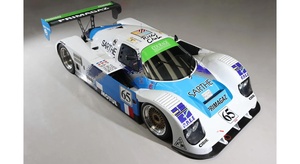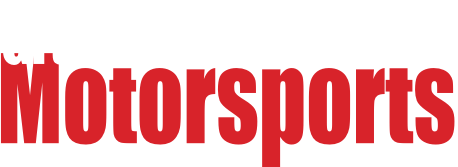
So, apologies as I'm sure this has been hashed and rehashed a few dozen times (maybe there should be a pinned thread?)...I searched but came up empty. I'm asking what titles are most suggested by the hive on the topic of rebuilding engines?
I happen to have a spare running but ragged small block Chevy 350 that I'm starting to find the motivation to rebuild...but I'm also probably going to want to stroke the rotating assembly and shoot for 400ish hp figures. I'm not at all sure where to start, but I'm ready to teach myself, and need some literature to get me started. I know YouTube exists, and I'm certain that will be a resource I'll lean on. But I also like the idea of having books to read through and check against too.
This will be my first rebuild and I'm in no rush, so lots of time will be taken and I'm sure more than few mistakes will be made. I don't know how to go about planning a rebuild. I'm hoping to educate myself and am looking for books that are good teaching aids and maybe how-to manuals. How to plan, what to consider in making said plan, what to keep when tearing the old mill down etc etc.
Some googling lead me to David Vizard and Larry Atherton. Any other authors or specific titles? Any suggestions are welcome.
I don't have any suggestions, but I can give you a free bump.

ShawnG
MegaDork
4/7/25 9:59 a.m.
You found David Vizard already so I can't help.
Remember HP = (TQ * RPM) / 5252
HP increases as you are able to spin the engine faster.
Increasing stroke reduces high RPM capability so you'll make more torque but less potential HP.
You could de-stroke it, build a 327 and rev it to the moon to make your 400HP.
Two of the nicest running Chevrolet engines I've driven have been a carbed 327 and a 283 Fuelie.
In reply to ShawnG :
Thanks for that...the logic seems so intuitive when you lay it out like that. I've always had "no replacement for displacement" etched into my brain. The math part was never reinforced the same way.
I do want her to spin pretty well...in my bar-napkin plan, I was going to try and keep the budget pretty low, opting for low-buck parts where I can, but possibly splurge on a lightweight rotating assembly...your post puts that plan in a different light.
Did a bunch more googling. Just clicked purchase on these 2:
Vizard -Chevy Small Blocks in a Budget
Atherton - Small-Block Chevrolet: Stock and High-Performance Rebuilds
Any others that I should look at?
Who are the rebuild channels on YouTube that I should look into?
Thanks everyone!
4cylndrfury said:
In reply to ShawnG :
Thanks for that...the logic seems so intuitive when you lay it out like that. I've always had "no replacement for displacement" etched into my brain. The math part was never reinforced the same way.
I do want her to spin pretty well...in my bar-napkin plan, I was going to try and keep the budget pretty low, opting for low-buck parts where I can, but possibly splurge on a lightweight rotating assembly...your post puts that plan in a different light.
It shouldn't. At those HP levels it's not really relevant.
It's kind of like the rough finish on the port walls thing. In theory there is some truth to it. In practice it doesn't really make enough difference to matter. 283, 327, 350, 377, they're all good. If on a budget keep it simple and spend your money on cylinder heads.
In reply to Peabody :
I have been keeping an eye out for deals on aluminum heads with good flow. Thanks for the advice

ShawnG
MegaDork
4/8/25 9:46 a.m.
To be honest, you'll "feel" torque more in every day driving.
Since HP is related to RPM, more RPM = more HP. How much time are you spending near redline?
Build an engine with a broad, flat torque curve and the HP will always be "enough".
In reply to ShawnG :
The SBC in question came out of my 72 Monte Carlo, and it was replaced with a Blueprint complete 383 with a nice fat torque curve, making 470 lb/ft. You're absolutely correct - I rarely get it up to 5k when cruising around. I like the power delivery and am shooting for something similar.
I'm thinking I will want to drop this into a GBody Regal or Cutlass, in front of a 5speed and without many frills. I just want a very fun driver, not a racer or a show queen. Screaming past redline will rarely be on the menu, but grins and giggles between lights hopefully will be.
Rebuilding an old engine is about a lot of measuring, determining what is usable and what needs to be machined to be round or flat or a given size. Then getting parts that match the new measurements, then measure some more. Then assemble, then measure some more.
Or just make sure it looks good enough, rough it up or polish it up and send it.

I used this book may have read the 1968 to 1973 edition cover to cover. And memorized engine specs for most GM V8's, all long gone from my memory now.
Also the 1977 and 1983 edition. Sure hope I still have them and they didn't go with the book sale.
General questions for the group-
1. For street engines, why do people start with an hp instead of a torque goal?
2. Why do we talk about peak hp numbers instead of area-under-curve on a dyno?
Dyno chart for the 2025 Chevy ZR1 for inspiration:


ShawnG
MegaDork
4/19/25 1:33 p.m.
Because hp figures look sexy and people don't understand torque.
Torque is how much work you can do.
Hp is how fast you can do it.
In reply to ShawnG :
Very true.
I wrote some simple calculations that target shift rpm based on any provided engine power/torque curve and have applied it to everything from Spitfire engines to CART engines turning nearly 18k rpms, to FIA GT1 7.0L engines.
Area under the curve is the answer. The less peaky the torque curve the easier it is to drive quickly.
The area under the curve idea can be expanded to capture more than full throttle too. That would be volume under the surface. Imagine a sheet pulled tight between closed and open throttle and between idle and max rpm. This or something similar is the typical surface you see for engine tuning. software
I drove an S2000 back to back with a 3.0 Z4 on fast back roads, the S2000 if faster on paper, the Z4 was easier to hustle and felt faster. On a track the S2k wins on the street not so much.
Same with my E30M3 vs E34 with close ratio 5 speed, both had the same top speed, M3 was quicker but the E34 was easier to drive in a spirited manner. Let's not get into my high strung 350 SBC vs Olds 455, yeah power under the curve wins.
So why do I prefer the smaller lighter cars with the peaky wind em up motors.
Off topic kind of but build for what your end use is, plan on running WOT at peak rpm cam and heads for it. Street use from idle to 3500 most of the time that's a different build.
Mostly I just want to build it because I have a spare engine sitting on the stand, and it's a new challenge I've never tackled before.
End goal is really just a reliable unit capable of decent, streetable power. I'm not a racer. I want a fun driver. Heck, I haven't even decided what I want to put it in yet lol...I keep bouncing around between a G-body or early 2nd gen Camaro.































